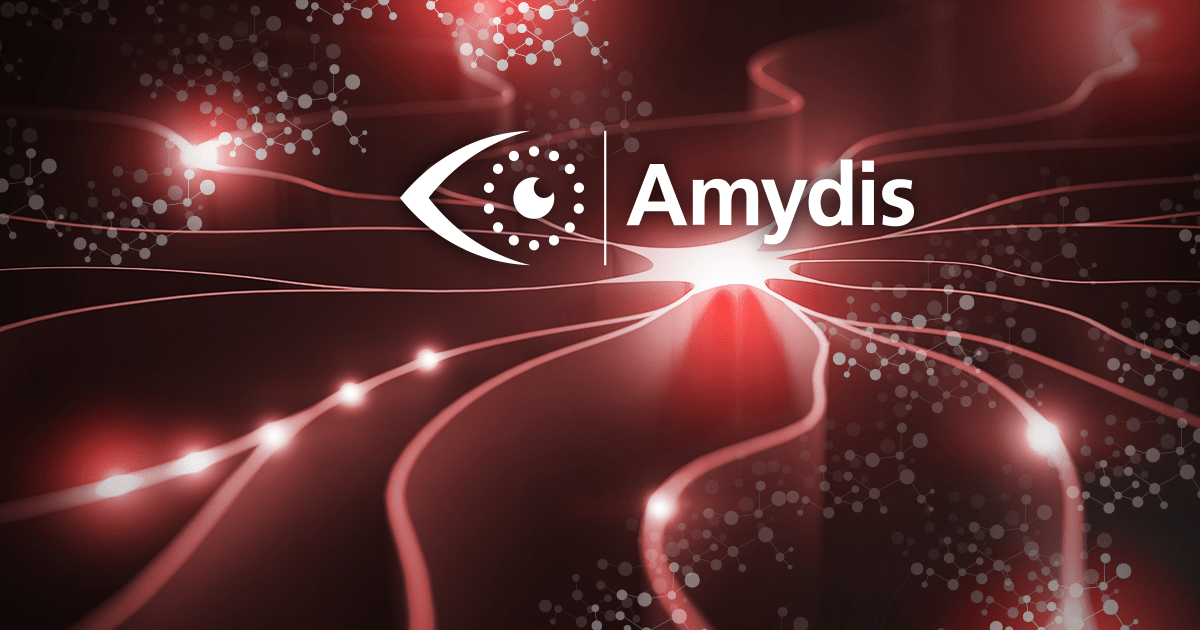NIH Awards Amydis $3 Million Grant Award for Novel Amyloid Beta Retinal Tracer Applicable to CNS Diseases

Amydis is developing novel small-molecule contrast agents that aim to enable the direct visualization of central nervous system (CNS) disease-related biomarkers in the retina. The company recently received a $3 million grant from the National Institutes of Health (NIH) National Institute of Aging as part of the two-year Commercialization Readiness Pilot program, which will support its investigative new drug and an adaptive Phase I/IIa first-in-human clinical trial evaluating the “retinal tracing” drug.
Designed to be used with standard ophthalmic devices, the retinal tracer targets the surrogate biomarker amyloid beta to help diagnose CNS diseases, including glaucoma and age-related macular degeneration as well as cerebral amyloid angiopathy and Alzheimer’s disease. The company says it has received continuous NIH grant support during the past five years to accelerate development of this retinal tracer.
“We are very grateful to the NIH for their continued support,” said Stella Sarraf, PhD, CEO and founder of Amydis in a news release. “Our goal is to provide clinicians with more affordable and accessible diagnostics early in the disease process to enable more efficacious intervention and better patient care. The retina is an accessible part of the CNS that can be non-invasively imaged at micron-level resolution, and our novel, small-molecule compounds are designed to capitalize on this advantage relative to brain imaging and more invasive spinal fluid analysis.”
The Retina Is Accessible
As an accessible part of the CNS, the retina offers a means to diagnose and track diseases. The brains and retinas of patients with neurodegenerative diseases have deposits of misfolded proteins that can be readily imaged. According to the company’s website, the retina is a “window to the brain through which one can look for evidence of neurodegenerative disease.” Amydis is developing new small-molecule contrast agents that selectively bind to disease-related proteins and then emit a strong fluorescent signal.
“The Amydis retinal tracer addresses an unmet need in clinical practice and will be valuable for both patients and doctors,” Raymond Scott Turner, MD PhD, professor of neurology and director of the memory disorders program at Georgetown University in Washington, DC, said in a news release.
The company reports that it has confirmed this approach in animal models of Alzheimer’s and Parkinson’s disease, cerebral amyloid angiopathy, traumatic brain injury, and Creutzfeldt-Jacob disease. The platform of retinal tracers may be able to discriminate between conditions, facilitating differential diagnosis, according to Amydis’ website.
Faster, Cheaper, Earlier
“Amydis retinal tracers are designed to be faster, cheaper, and better compared to existing diagnostics for neurodegenerative diseases,” the company noted. “With our tracers, there is no need for radioactive compounds, such as those used in PET (positron-emission tomography) brain imaging, making them safer for patients and amenable to repeated use. Our drugs are designed to be a part of an office visit and can be visualized immediately after delivery with conventional cameras in the eye-care specialist’s office.”
Ultimately, Amydis seeks to identify people at risk for developing neurodegenerative diseases earlier and at a more broadly accessed point of care where the demographics of these patients overlap: ophthalmologists’ offices. “Capturing large numbers of at-risk patients will revolutionize patient care and the testing of new therapeutic interventions,” the company stated.

